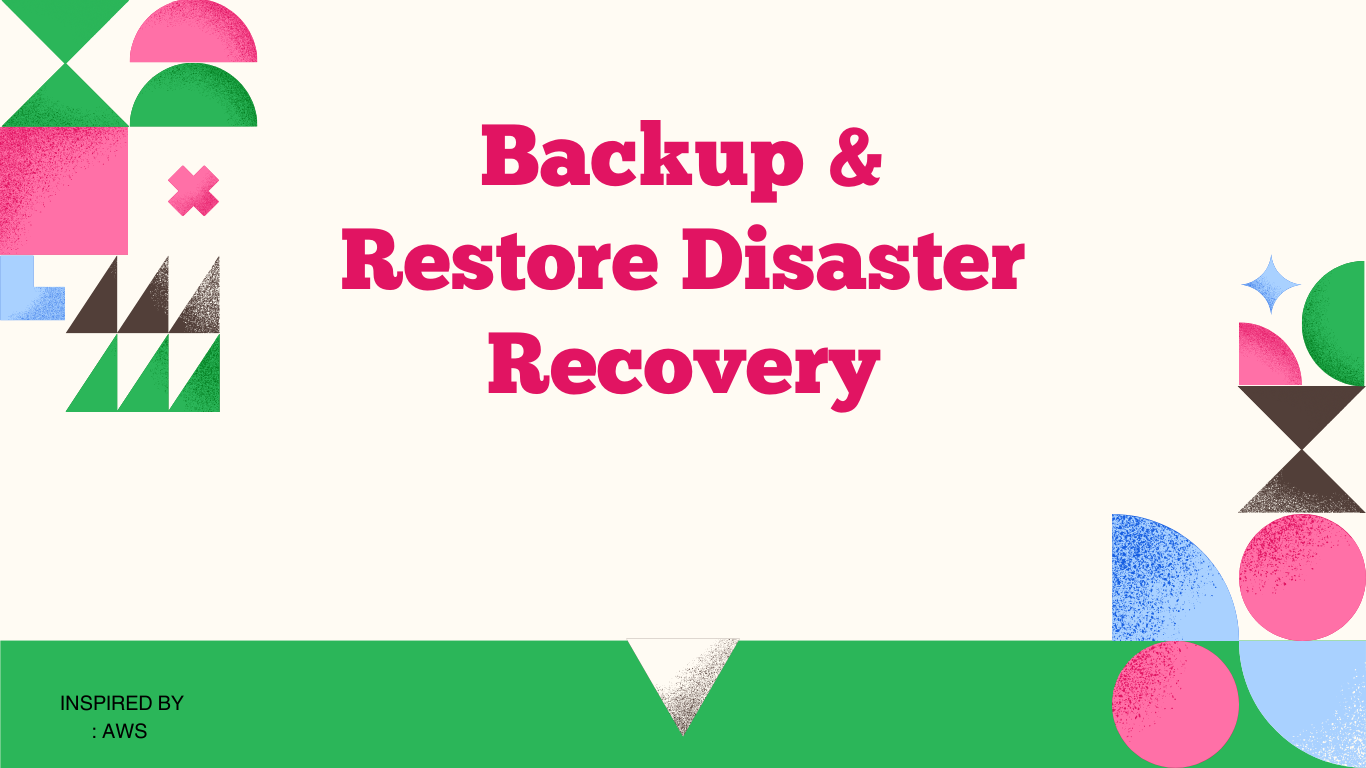Mastering Resilience: AWS Disaster Recovery Strategy through Backup and Restore
 Sumit Mondal
Sumit Mondal
Introduction
In the dynamic landscape of today's digital world, ensuring the continuity of business operations is paramount. Unforeseen events such as natural disasters, cyber-attacks, or hardware failures can cripple an organization if they are not prepared. Amazon Web Services (AWS) offers a robust set of tools and services to fortify your infrastructure against such disasters. In this blog, we will delve into the intricacies of AWS Disaster Recovery (DR) strategy, focusing on the crucial aspects of backup and restore.
Understanding Disaster Recovery on AWS
Disaster Recovery on AWS is a multi-faceted approach aimed at minimizing downtime and data loss. A key component of this strategy is the ability to back up your data and swiftly restore it when needed. AWS provides a variety of services to facilitate this process, including Amazon S3 for scalable object storage, AWS Backup for centralized backup management, and AWS Lambda for serverless computing.
Backup Strategies on AWS
AWS supports several backup strategies to accommodate different business needs. Let's explore two fundamental approaches: EBS Snapshots and Amazon RDS Snapshots.
- Amazon EBS Snapshots:
Amazon Elastic Block Store (EBS) provides block-level storage volumes for use with EC2 instances. EBS Snapshots allow you to create point-in-time copies of your EBS volumes. These snapshots can be used to recover data in case of accidental deletion, corruption, or to create new EBS volumes.
Example: Suppose you have an EC2 instance hosting a critical database. You can create an EBS snapshot regularly using AWS Management Console, AWS CLI, or SDKs. This snapshot becomes a reliable restore point in case of a failure.
- Amazon RDS Snapshots:
For managed relational databases, Amazon RDS offers automated backups and manual snapshots. Automated backups are taken daily and retained for a user-defined period. Manual snapshots, on the other hand, can be initiated at any time, providing greater control over the backup process.
Example: Consider an application relying on Amazon RDS for its MySQL database. Regular automated backups ensure that the database state is captured daily. Additionally, you can create manual snapshots before making significant changes to the database schema or configuration.
AWS Backup - Centralized Management
While EBS and RDS snapshots provide targeted solutions, AWS Backup offers a centralized and streamlined approach to managing backups across multiple AWS services. AWS Backup allows you to create backup plans, set retention policies, and monitor backup compliance.
Example: Imagine you have a complex architecture involving EC2 instances, RDS databases, and S3 buckets. AWS Backup lets you create a unified backup plan that spans these services. This centralized management simplifies the monitoring and execution of backup and restore operations.
Restore Strategies on AWS
Creating backups is only half the battle; the ability to efficiently restore data is equally crucial. AWS offers various methods for restoring data, depending on the service and backup type.
- Amazon EBS Volume Restore:
Restoring an EBS volume from a snapshot is a straightforward process. You can create a new EBS volume based on a snapshot and attach it to an EC2 instance.
Example: Suppose the data on an EBS volume becomes corrupted. By selecting the appropriate snapshot and creating a new volume, you can swiftly replace the damaged volume and resume operations.
- Amazon RDS Point-in-Time Restore:
Amazon RDS allows point-in-time restores, enabling you to recover a database to any specific point within the retention period of automated backups.
Example: If an unintended change is made to the database, you can initiate a point-in-time restore to roll back the database to its state at a specific timestamp, minimizing data loss.
Continuous Improvement with AWS Well-Architected Framework
To optimize your disaster recovery strategy on AWS, it's essential to align your architecture with the AWS Well-Architected Framework. This framework provides best practices across key pillars, including Operational Excellence, Security, Reliability, Performance Efficiency, and Cost Optimization.
Example: Regularly reviewing and refining your disaster recovery plan based on the Well-Architected Framework ensures that your architecture remains resilient to evolving challenges. This could involve adjusting backup frequencies, testing restore processes, and optimizing resource allocation.
Conclusion
In the ever-evolving landscape of cloud computing, a robust disaster recovery strategy is indispensable. AWS offers a plethora of tools and services to fortify your infrastructure against potential disasters, with backup and restore being pivotal components. By leveraging services like EBS and RDS snapshots, AWS Backup, and adhering to the Well-Architected Framework, organizations can build resilient systems that withstand the test of unforeseen events. Embrace the power of AWS to not only protect your data but also to ensure that your business continues to thrive even in the face of adversity.
Subscribe to my newsletter
Read articles from Sumit Mondal directly inside your inbox. Subscribe to the newsletter, and don't miss out.
Written by

Sumit Mondal
Sumit Mondal
Hello Hashnode Community! I'm Sumit Mondal, your friendly neighborhood DevOps Engineer on a mission to elevate the world of software development and operations! Join me on Hashnode, and let's code, deploy, and innovate our way to success! Together, we'll shape the future of DevOps one commit at a time. #DevOps #Automation #ContinuousDelivery #HashnodeHero